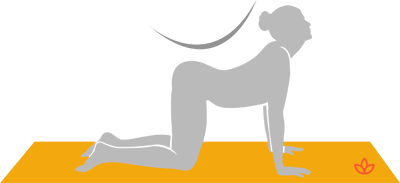I remember the first time I taught a yoga class. Creating a yoga sequence was something I spent hours (if not days) doing because I was new to teaching and wanted to get it all just right.
Like anything, the more you practice, and the more you teach, the more natural these things come.
And making up a yoga sequence becomes more of a chance to get into that flow state of creation. You can still challenge yourself, but the process becomes fun and inherently interesting.
If you’re wondering how to create a yoga sequence, whether for your own fun or because it’s part of your homework, or professional work, here are some guidelines to get you started:
Consider Your Students
If your sequence is for a class you’re teaching, consider the students involved.
Your class is an offering to your students.
They’re paying you—giving you their time and energy—so that you can give them a class that might be just what they need. Sure, not everyone in your class will have the exact same needs, but you can definitely consider who your students are as you create your yoga sequence.
You’re obviously not going to teach an advanced vinyasa class to a group of beginners. That’s stating the obvious. But, as you think of your class, and the students you’ll be gearing this sequence to, you’ll find more subtle ways to tailor the sequence to fit their physical, emotional, and spiritual needs.
Come up With a Good Theme
These days, themes are everything. A good theme that’s threaded into your teaching with effortless ease can take an average class, and turn it into one that transforms and inspires.
Themes run the gamut.
They can be as simple as focusing on postures that open the inner and outer hips. (Learn more in 5 Yoga Poses to Release Tight Hips.)
They can be as spiritual as cultivating oneness with the Divine.
Whatever theme you choose, make sure you introduce it at the beginning of class. You’ll then naturally weave it in throughout class, and come up with the perfect ending to bring it all together in savasana.

Sequence Around a Peak Pose
Many yoga classes are designed around a peak pose. Let’s say the peak pose for your class is dancer’s pose, natarajasana.

This pose works many parts of the body. As such, you’re going to want to stretch and open, strengthen and stabilize, and do whatever preparatory poses would warm the body and ready it for natarajasana. (Learn more in Dancing Incorrectly: 4 Common Mistakes of Dancer's Pose (Natarajasana) and How to Fix Them.)
For example, dancer’s pose requires balance and stability. Therefore, you’d want to do at least one beginning balance posture, like tree pose, before tackling dancer.
It also requires open shoulders, back, and quads, as well as stability in the pelvis. You can just imagine how many great prep poses are necessary before reaching this particular peak pose.
Make it Flow
All good classes have a natural flow to them. They’re not choppy and disjointed.
Instead, they follow a rhythm—one that has to do with timing, and also the postures that flow from one to the next.
In a good yoga teacher training, you’ll learn how to make it all flow. It will take practice, but before long, your sequencing will be seamless. You’ll know exactly when to give the cue for the next pose, and you’ll know exactly what pose should come after the one before. (Learn more in The 5 Virtues of a Good Yoga Teacher.)
All this knowing will take study and practice, but with time it will come naturally to you. Transitions will be an essential part of the flow. For example, a great transition pose if you’re coming from child’s pose into downward facing dog at the beginning of class, would be cat-cow pose.

Consider the Safety of Your Students
The awareness around your peak pose, as well as the flow of a sequence, will naturally lend itself to safety and injury prevention.
Yoga is challenging, and the last thing you want as a teacher is to be partially responsible for an injury because you didn’t properly warm up your students.
Even if you don’t have experience teaching, your studentship knows that you wouldn’t dive right into an advanced posture, like wheel or even bow pose, before doing some smaller backbends, like sphinx pose, bridge pose, and several upward facing dogs.

Practice and Prep
Be sure to practice your sequence before you teach it!
This way, you’ll discover the sticky moments that might need changing. If you have an draft of what kind of experience you want to give your students, but then realize by practicing it that you were a bit off in your planning, you can make the necessary changes before delivering the sequence live.
Creating and teaching a yoga class can be challenging, frustrating, and also a work of art in and of itself. This is the beauty of teaching! No two classes will ever be the same!
So have fun with your sequences and be patient with yourself as you learn and grow!
During These Times of Stress and Uncertainty Your Doshas May Be Unbalanced.
To help you bring attention to your doshas and to identify what your predominant dosha is, we created the following quiz.
Try not to stress over every question, but simply answer based off your intuition. After all, you know yourself better than anyone else.